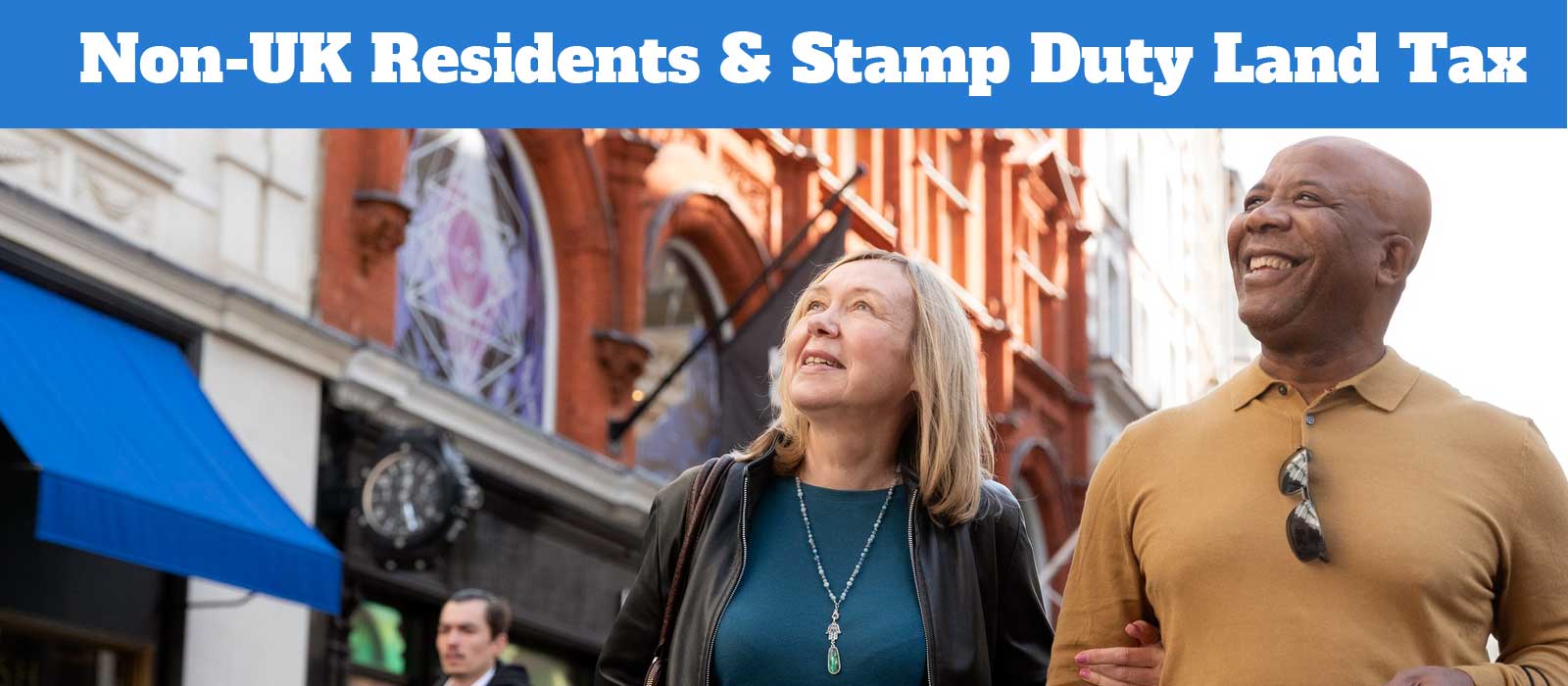
Embarking on your journey to homeownership can be both thrilling and intimidating, especially when it comes to navigating the complex world of taxes and fees. Fear not, for first-time buyers in the UK can benefit from stamp duty relief, which can significantly reduce or even eliminate the tax on your property purchase! In this guide, we will walk you through the essential aspects of first-time buyer stamp duty relief, helping you make the most of this advantageous opportunity and step onto the property ladder with confidence.
Key Takeaways
- Understand the government relief available to first-time buyers for Stamp Duty Land Tax (SDLT) and eligibility requirements.
- Consider alternative options if purchasing jointly, such as buying solely in the name of a first-time buyer or taking advantage of Help to Buy mortgage schemes.
- Plan ahead and seek professional guidance when budgeting for upfront costs associated with property purchase.

Understanding Stamp Duty for First-Time Buyers
Stamp Duty Land Tax (SDLT) is a tax levied on property purchases in England and Northern Ireland, applicable to residential properties exceeding a specific value. The amount of SDLT payable depends on the purchase price of the property, with increasing tax rates applied to different bands of the property price. Typically, the property purchaser is responsible to pay stamp duty. For those looking to purchase their first property, this change in financial regulations brings with it a unique set of considerations. What do these new rules mean for the prospective first-time buyer? First-time buyers have the option to pay SDLT in stages or on the full market value under shared ownership schemes.
For those venturing into homeownership for the first time, the government offers first-time buyer relief to help ease the burden of this tax. This relief reduces or eliminates the tax on residential property purchases for eligible first-time buyers. A deeper understanding of SDLT and its implications can help first-time buyers comprehend how this relief impacts their property purchase.
What is SDLT?
SDLT is calculated based on the purchase price of the property, with different rates applied to various price bands. For instance, the current threshold for SDLT on residential properties is £250,000. To determine the amount of SDLT due, buyers can use a stamp duty calculator to estimate their tax liability.
How it affects first-time buyers
First-time buyers benefit from relief that eliminates SDLT on the first £425,000 of a primary residential property. This relief can substantially reduce the upfront costs associated with purchasing a home, making it more accessible for first-time buyers to enter the housing market. However, it is important to note that this relief applies only to those purchasing a property to inhabit and does not extend to individuals who already own rental properties.
Key Aspects of First-Time Buyer Relief
To qualify for first-time buyer relief, buyers must meet specific criteria, such as never owning a property before and using it as their main residence. Additionally, to be considered a UK resident eligible for this relief, one must have been present in the UK for 183 days in the 12 months prior to buying. Certain property value thresholds also apply, which determine the amount of first time buyers relief available.
Reviewing eligibility requirements and property value thresholds provides a clearer picture of how first-time buyers can reap the benefits from this relief.
Eligibility requirements
To be eligible for relief, purchasers must fulfill certain criteria, including never having owned a property previously and utilizing it as their only or main residence. Moreover, an individual is considered a first-time buyer if they have not held an interest in a residential property in the UK or any other location and intend to reside in the property as their primary residence.
Note that receiving or inheriting a residential property as a gift, or planning to use the new property for buy-to-let investment, disqualifies you from the first-time buyer SDLT relief.
Property value thresholds
First-time buyer relief applies to properties up to £425,000, with a 5% rate for properties between £425,001 and £625,000. If a first-time buyer purchases a property above the £425,000 threshold, they are subject to the same normal stamp duty rates and thresholds as a non-first-time buyer. To benefit from this first time buyer stamp duty relief, one must claim stamp duty relief and obtain a time buyer stamp duty.
Understanding these thresholds can help first-time buyers budget for their property purchase more accurately.
Claiming First-Time Buyer Relief
Claiming first-time buyer relief requires filing an SDLT return and paying any due tax within the set deadline. Although it may appear challenging, it’s a necessary step to capitalize on the relief available to first-time buyers.
In this section, we will examine the process of filing an SDLT return and the consequences of late payment or filing.
Filing SDLT return
An SDLT return must be submitted within 14 days of the conclusion of property acquisition. The necessary information for the SDLT return comprises:
- The effective date of the transaction
- Particulars of the property being acquired
- The purchase price of the property
- The buyer’s particulars
- Any applicable reliefs or exemptions
You can find the SDLT return form on the official HMRC website and file it online following the provided instructions. Even if there is no SDLT to pay, a stamp duty return must still be completed to claim the applicable relief.
Payment deadline and penalties
Missing the 14-day deadline for filing your SDLT return and paying the tax can result in financial penalties and interest charges. Hence, strict adherence to the specified deadlines is needed to prevent expensive consequences.
Remember, it is typically the solicitor who is responsible for the SDLT return and any associated payments, although it can also be completed by the individual.
Joint Purchases and First-Time Buyer Relief
Joint purchases, where two or more individuals collaborate to acquire a property, can affect first-time buyer relief eligibility. It is important to understand how joint purchases impact your eligibility and consider alternative options if necessary.
We will consider the influence of joint purchases on first-time buyer relief eligibility and touch on potential alternatives.
Impact on relief eligibility
If one buyer is not a first-time buyer, relief will not be available for the joint purchase. To be eligible for first-time buyer relief in cases of joint purchases, all parties involved in the purchase must be first-time buyers. This requirement extends to both married and civil partners, as first-time buyer relief will not be granted if either party has previously owned a property.
Alternative options
One alternative for joint purchasers is to consider purchasing the property solely in the name of the first-time buyer. While this may affect mortgage eligibility if the first-time buyer’s partner has previously owned a home, it can help maintain eligibility for certain first-time buyer mortgage options and stamp duty relief.
It’s vital to evaluate the advantages and disadvantages of this option and seek advice from a mortgage advisor to identify the most suitable course of action for your particular situation.

Regional Differences in Stamp Duty
Property acquisition taxes are not uniform across the UK, with Scotland and Wales implementing their unique versions of stamp duty, known as Land and Buildings Transaction Tax (LBTT) and Land Transaction Tax (LTT), respectively.
We will touch on the regional disparities in stamp duty and their effects on first-time buyers.
Scotland’s Land and Buildings Transaction Tax (LBTT)
In Scotland, first-time buyers pay no LBTT on properties up to £175,000. LBTT is a tax on land and buildings transactions in Scotland, payable by the buyer upon purchase of a property.
Understanding the LBTT rates and thresholds specific to Scotland can help first-time buyers in the region budget and plan for their property purchase more accurately.
Wales’ Land Transaction Tax (LTT)
In Wales, there is no tax relief available for first-time homebuyers when it comes to Land Transaction Tax (LTT). This is similar to Stamp Duty which does not have a first-time buyer relief either. However, if the property is worth less than £225,000, first-time buyers in Wales don’t need to pay any tax.
It is essential for first-time buyers in Wales to be aware of the LTT rates and thresholds to ensure accurate budgeting and preparation for their property purchase.
Mortgage Options and First-Time Buyer Relief
Various mortgage options may qualify for first-time buyer relief, such as Help to Buy mortgages and shared ownership. Understanding these mortgage options and their eligibility for relief can help first-time buyers make informed decisions regarding their property purchase.
This section will touch on Help to Buy mortgages and shared ownership schemes.
Help to buy mortgages
Help to Buy mortgages are an option available to first-time buyers that can assist in obtaining a mortgage with a smaller deposit. The government provides an equity loan of up to 20% (or 40% in London) of the property value, which is interest-free for the first five years, reducing the deposit and mortgage needed from the buyer.
This loan can help first-time buyers access more affordable mortgage options and potentially decreased monthly repayments.
Shared ownership
Shared ownership is a scheme whereby buyers can purchase a portion of a property and pay rent on the remaining share. This option allows first-time buyers to enter the property market with a smaller initial investment and gradually increase their ownership stake over time through a process called ‘staircasing’.
First-time buyers who select shared ownership can still avail of stamp duty relief, making this an attractive option for those with limited resources to enter the property market.
Inheritance, Shared Ownership, and First-Time Buyer Status
Inheritance and shared ownership can affect first-time buyer status and, consequently, eligibility for relief. It is crucial for individuals considering entering the property market to understand how these factors may impact their first-time buyer status.
This section will analyse how inheritance and shared ownership impact first-time buyer eligibility.
Inherited properties
Inheriting a property renders an individual ineligible for first-time buyer relief, as they are no longer considered a first-time buyer.
This applies even if the individual has never actually purchased a property before. Understanding the implications of inheriting a property on your first-time buyer status can help you make informed decisions about your property purchase and potential eligibility for relief.
Owning a share in another property
Owning a share in another property, such as through a shared ownership scheme, also disqualifies an individual from first-time buyer status. As a result, they will not be eligible for stamp duty relief when purchasing a new property.
Being aware of how shared ownership affects your first-time buyer status can guide you in making informed decisions about your property purchase and potential relief eligibility.

Non-UK Residents and Stamp Duty
Non-UK residents face additional SDLT surcharges and must meet residency requirements to qualify for first-time buyer relief. This section will address additional SDLT surcharges for non-UK residents and the residency prerequisites needed for relief qualification.
Additional SDLT surcharge
Non-UK residents purchasing property in England and Northern Ireland are subject to an additional 2% SDLT surcharge on top of the standard rates. This surcharge is applicable to all residential properties priced over £40,000.
Non-UK residents should be mindful of this extra cost while planning their property purchase budget.
Residency requirements
To be eligible for first-time buyer relief, non-UK residents must have resided in the UK for at least 183 days in the year prior to the purchase. This requirement ensures that only those with a substantial connection to the UK can benefit from the relief.
Non-UK residents should take these residency requirements into account when planning their property purchase and potential eligibility for relief.
Tips for First-Time Buyers
Navigating the property market as a first-time buyer can be challenging, but with proper planning and guidance, you can make the process smoother and more enjoyable. This section will provide some practical advice for first-time buyers, covering aspects such as budgeting for upfront costs and seeking expert advice.
Budgeting for upfront costs
When budgeting for a property purchase, it is essential to consider all the associated costs, including SDLT, conveyancing fees, and mortgage arrangement fees. By having a clear understanding of these costs, you can ensure that you are financially prepared for your property purchase and avoid any unexpected surprises along the way.
Investigating available government schemes like the Lifetime ISA can also be beneficial. These programs can aid in saving for a deposit and lowering your total property purchase expenses.
Seeking professional guidance
Purchasing a property is a complex process, and seeking professional advice from a solicitor or conveyancer can help ensure a smooth experience. These professionals can offer invaluable counsel on:
- market trends
- property values
- financing options
- legal requirements
They can also assist you in avoiding potential obstacles and negotiating the most advantageous deal.
By leveraging their expertise, you can confidently navigate the property market and make informed decisions about your property purchase.
Summary
In conclusion, first-time buyer stamp duty relief offers significant benefits to those entering the property market for the first time. By understanding the eligibility criteria, property value thresholds, and associated costs, first-time buyers can make informed decisions and take advantage of this valuable relief.
Furthermore, exploring various mortgage options, understanding regional differences in stamp duty, and seeking professional guidance can help ensure a smooth and successful property purchase. With the right knowledge and preparation, you can confidently embark on your journey to homeownership and unlock the door to your dream home.
Frequently Asked Questions
Do you pay stamp duty for first-time buyers?
As a first-time buyer, you may be eligible for stamp duty relief, meaning you will pay no, or reduced, taxes on the property you purchase. The exact amount payable depends on the value of the property you buy, with any amount over the threshold being subject to the tax.
How much is stamp duty on a 400k house?
In Wales, a 400k house would have a stamp duty of £7,500. This is calculated according to the LTT Rate.
Is the new stamp duty cut just for first-time buyers?
The new stamp duty cut applies to both first-time buyers and existing homeowners, with the threshold for stamp duty varying depending on the type of buyer.
What are the eligibility requirements for first-time buyer relief?
To be eligible for first-time buyer relief, you must be a first-time homebuyer and use the property as your main residence.
How do joint purchases affect first-time buyer relief eligibility?
Joint purchases are not eligible for first-time buyer relief if any of the buyers is not a first-time buyer.

